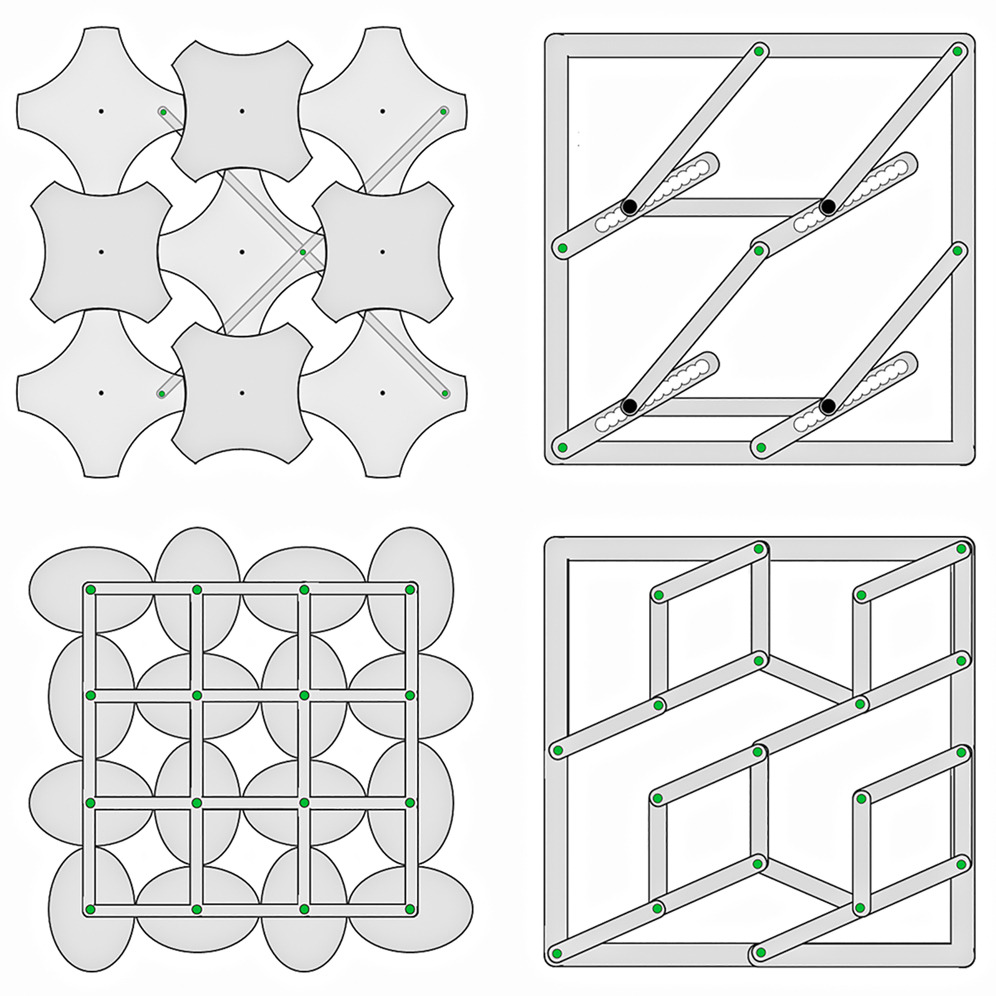Ahmad Rafsanjani and Mohammad Mirkhalaf (Queensland University of Technology, Australia) wrote a perspective in Matter on reprogrammable mechanical metamaterials by utilizing machine mechanisms.
Progress and Potential: Tailoring materials’ internal architecture is an established way of obtaining properties beyond those of their constituents. Examples are architectured ceramics that are tougher than their constituents and metamaterials that can sense, compute, and self-heal. The properties of these metamaterials are, however, often fixed post fabrication. Adaptable properties are desired in many applications. For example, adaptive interaction with arbitrarily shaped objects with various stiffnesses is desired in human-machine interfaces. An adaptive shape while preserving stiffness is desired in marine and aerospace devices to improve their maneuverability. This perspective shows how machine elements and mechanisms can be used to continuously reprogram the architecture and properties of metamaterials post fabrication. Machine metamaterials enable a wide range of opportunities discussed here. For example, strain is minimal during transformation in these metamaterials, allowing reprogrammable ceramics.
Mirkhalaf M., Rafsanjani A. (2023). Harnessing machine mechanisms to continuously reprogram metamaterials, Matter 6(11), 3719-3731.
